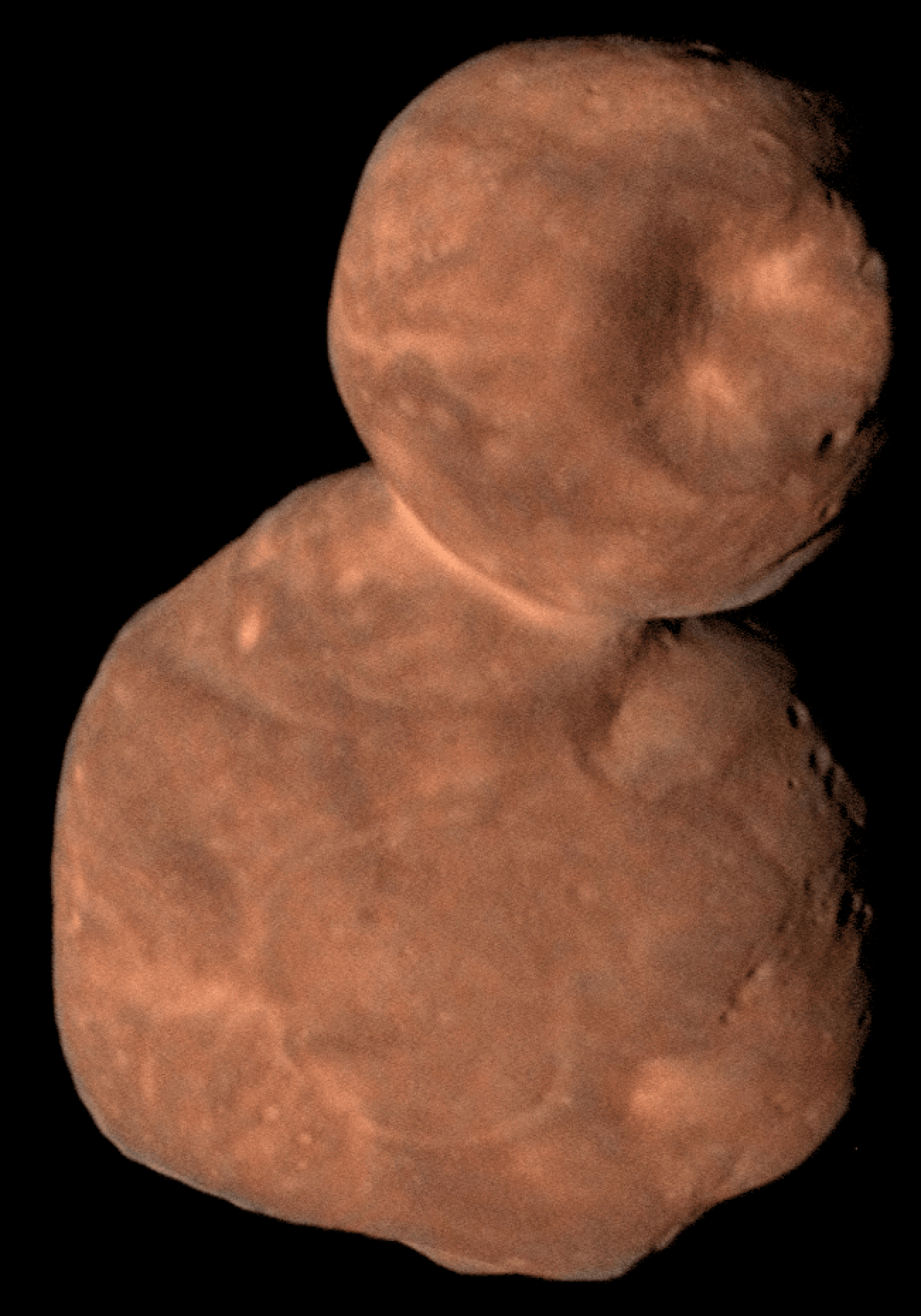NASA’s New Horizons spacecraft, which visited Pluto in 2015, continued its journey through the far edges of our solar system and explored some of the bodies in the outer asteroid belt, also known as the Kuiper Belt. Now NASA’s New Horizons spacecraft has transmitted its first set of findings about the Kuiper Belt, according to a news release.
New Horizon also flew by an object referred to as MU69 or Ultima Thule on New Year’s Eve. Researchers were attracted by its interesting shape, but as the spacecraft started taking pictures, they learned that they were dealing with a very complex object. The results of their study were reported in the journal Science today.
Ultima Thule sparked interest in scientists for many reasons. For example, it’s the farthest object ever explored in history, located 4 billion miles from Earth. Ultima Thule is also a well-preserved planetesimal, which is an object believed to have participated in the formation of planets in the early era of our solar system.
Observations taken by NASA’s New Horizons spacecraft indicate Ultima Thule is 22 miles long and consists of a large, flat lobe connected to a significantly smaller, rounder lobe. Researchers still can’t answer how the two lobes got the shape they have, but the first findings about the Kuiper Belt suggest the object has had that shape for a long time.
Researchers believe the two lobes originally orbited one another, similar to many binary systems now existing in the belt, and that later something brought them together. Researchers believe that for this gentle merger to occur, the binary’s orbital momentum dissipated. However, researchers still don’t know whether aerodynamic forces from gases caused it.
“We’re looking into the well-preserved remnants of the ancient past,” New Horizons Principal Investigator Alan Stern of the Southwest Research Institute said in the news release. “There is no doubt that the discoveries made about Ultima Thule are going to advance theories of solar system formation.”
Observations taken from NASA’s New Horizons spacecraft suggest Ultima Thule is not much different than the vast majority of other objects found in the area. The first findings about the Kuiper Belt reveal that the object is red and has a much stronger color than Pluto, which was at the inner edge of the Kuiper Belt in 2015 when the spacecraft explored it. Researchers believe that the red color resulted from the modification of the organic materials across the surface. The New Horizons spacecraft revealed evidence of methanol, ice and organic molecule mixtures which are much different than what has been found on the icy objects studied within the belt.
New Horizons will continue to transmit data to Earth until the late summer of 2020. Meanwhile, the spacecraft will continue to explore and observe other Kuiper Belt objects. Many objects in the Kuiper Belt are too distant for exploration, although the team can measure other properties of those objects, such as brightness.
Right now NASA’s New Horizons spacecraft is about 4.1 billion miles from Earth. The spacecraft is in good health and working normally while moving 33,000 miles per hour through the belt.





